RWC 2023
Rugby World Cup showcases the brilliance and struggle of tier-two nations
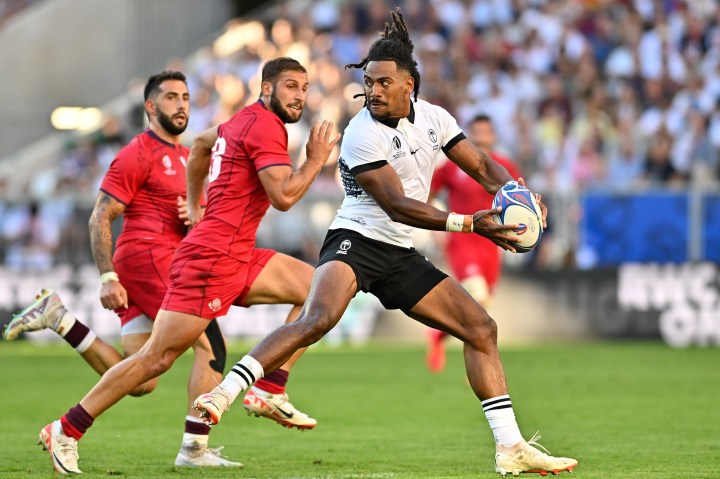
The tournament has shown how far some of the minnows have come in the game, but much more needs to be done to help them get even further.
At the top end, it’s lived up to its billing as the most competitive tournament in history, with France, New Zealand, South Africa, Ireland, England and Wales claiming big scalps in the pool stage to strengthen their respective bids for a place in the quarterfinals, and ultimately the title itself. Argentina have been underwhelming so far, but will bear watching in the next round.
After producing a series of dazzling displays, Fiji look set to qualify for the knockouts for the first time since 2007. The Pacific island nation has taken giant strides in the 15-man code over the past four years, thanks to the restructuring of the local game and the launch of the Fijian Drua franchise, which has played regularly in the Super Rugby Pacific tournament alongside top New Zealand and Australian teams.
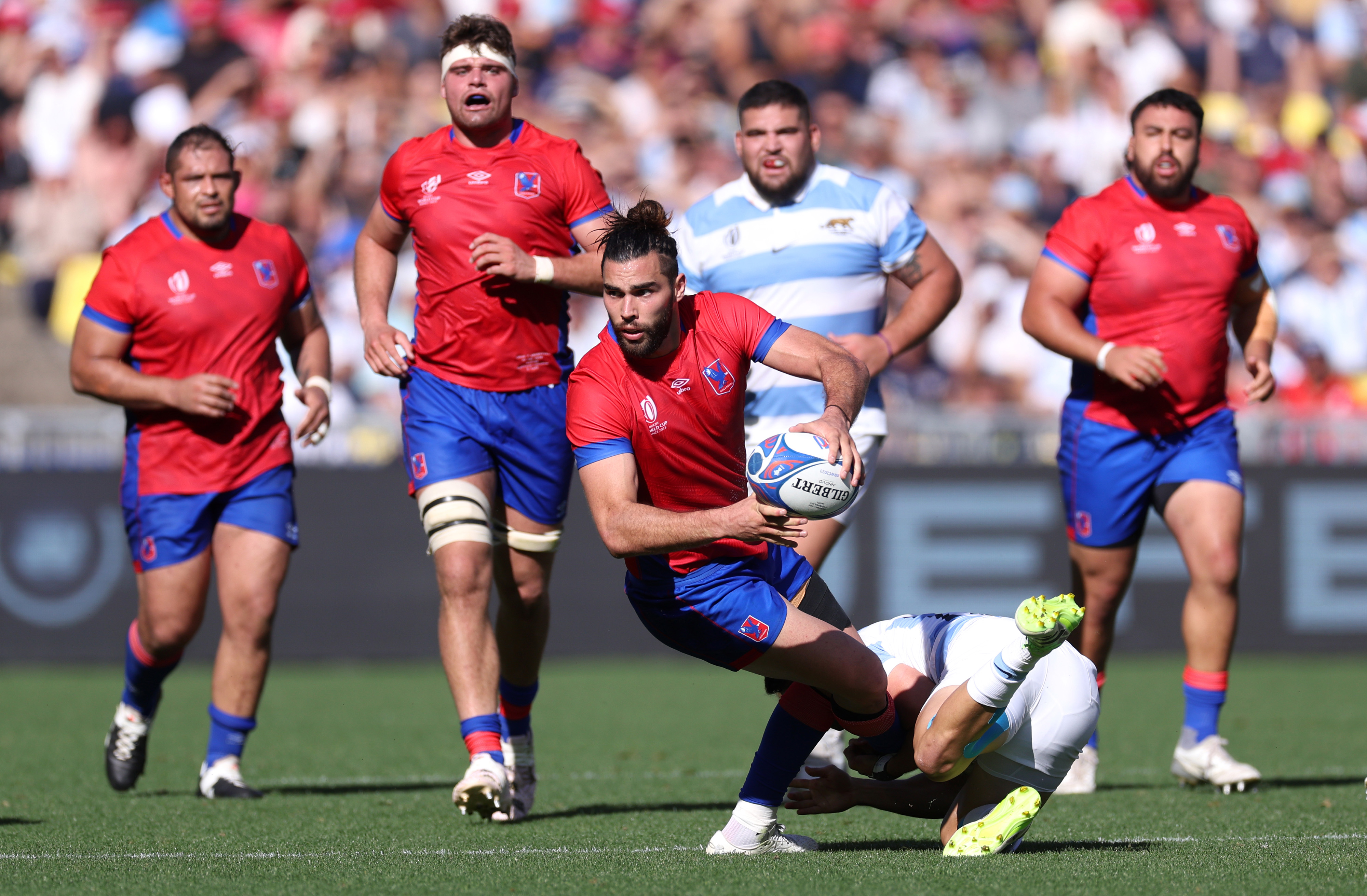
Inaki Ayarza of Chile looks to pass the ball while under pressure during their Rugby World Cup France 2023 match against Argentina at Stade de la Beaujoire in Nantes on 30 September. (Photo: Warren Little / Getty Images)
Fiji have been the talk of the tournament since pushing Wales close on the opening weekend of the World Cup. They proved that that performance was no fluke when they beat two-time champions Australia in Saint-Étienne. A month earlier, at Twickenham, they had romped to a historic win against England.
Portugal, Georgia, Uruguay and plucky newcomers Chile have impressed fans and critics over the past few weeks, prompting many to ask what these nations might achieve if they received the necessary investment and backing, as well as a regular run of competitive Test matches between World Cups.
Romance versus realism
It’s easy to get swept away in the romance of David-vs-Goliath showdowns, and to dream about what the future may hold.
Argentina featured in the 2007 World Cup semifinal, but it was only after they joined the Rugby Championship in 2012 and after a local franchise – the Jaguares – joined Super Rugby in 2016 that they began to realise their potential as a tier-one nation.
Japan claimed the biggest upset in rugby history when they knocked over the Boks at the 2015 World Cup. They continued to grow in subsequent years, after the Sunwolves joined Super Rugby in 2016, and after they qualified for the quarterfinals of their home World Cup in 2019, beating Ireland and Scotland on the way. Though they haven’t progressed much in recent seasons, they are still considered a tier-one nation.
It’s tempting to put Fiji on the pedestal after their recent success and to believe that other tier-two teams will follow in their footsteps. The reality is that Fiji are still punching above their weight and don’t have the resources of most big teams.
Bar the Fiji vs Australia result, which was classed as an upset even though Fiji’s world ranking was higher than Australia’s coming into the tournament, there have been no major upsets in the 2023 pool phase.
Uruguay pushed France close, but went on to lose 27-12. Portugal and Chile took the fight to the likes of Australia and England, but ended up losing by 20 and 71 points respectively. Tonga rattled the Boks in the first half but still lost by 31 points.
That’s at the competitive end of the spectrum. At the other end, Romania lost by 70 or more points against Ireland, South Africa and Scotland.
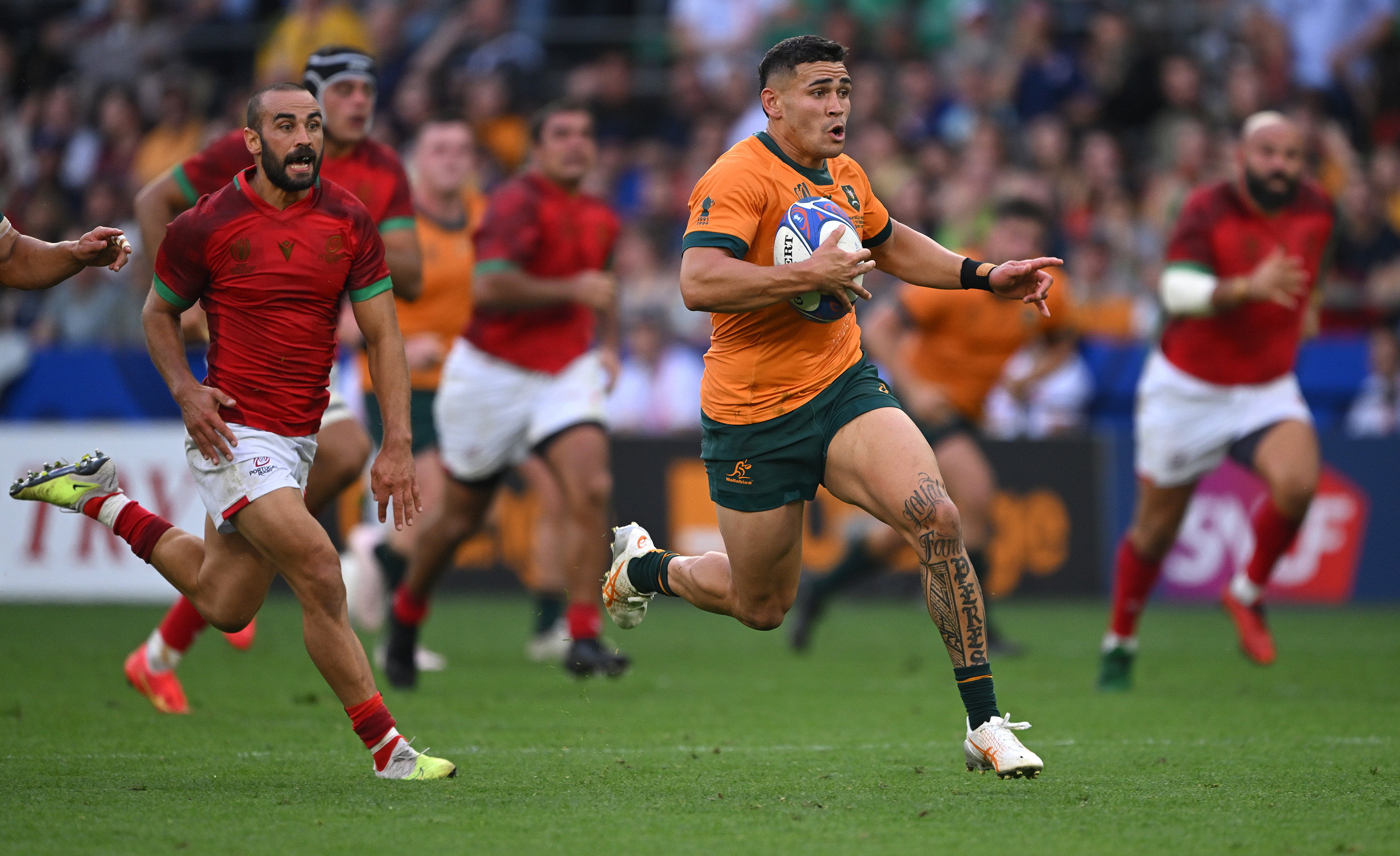
Australia player Izaia Perese in action during the Rugby World Cup France 2023 match against Portugal at Stade Geoffroy-Guichard in Saint-Etienne on 1 October. (Photo: Stu Forster / Getty Images)
Namibia leaked 52 against Italy, 71 against the All Blacks, and an unanswered 96 against France.
Many tier-one nations got those results with second-stringers.
It’s an honour for every team to compete at a World Cup and many players will tell their grandchildren about the day they battled the mighty Boks.
In the moment, however, it’s been hard to watch proud nations losing by 50 and in some cases close to 100 points. One way or another, World Rugby and the unions have to make a change to ensure these teams avoid falling further behind.
World Rugby plans to expand the tournament from 20 to 24 teams in 2027, and there is concern over more one-sided scorelines.
Speaking at a recent press conference in France, World Rugby CEO Alan Gilpin suggested that a few of these teams will receive more backing between tournaments, which should ensure they are more competitive at the next World Cup in Australia, and the 2031 competition in the US.
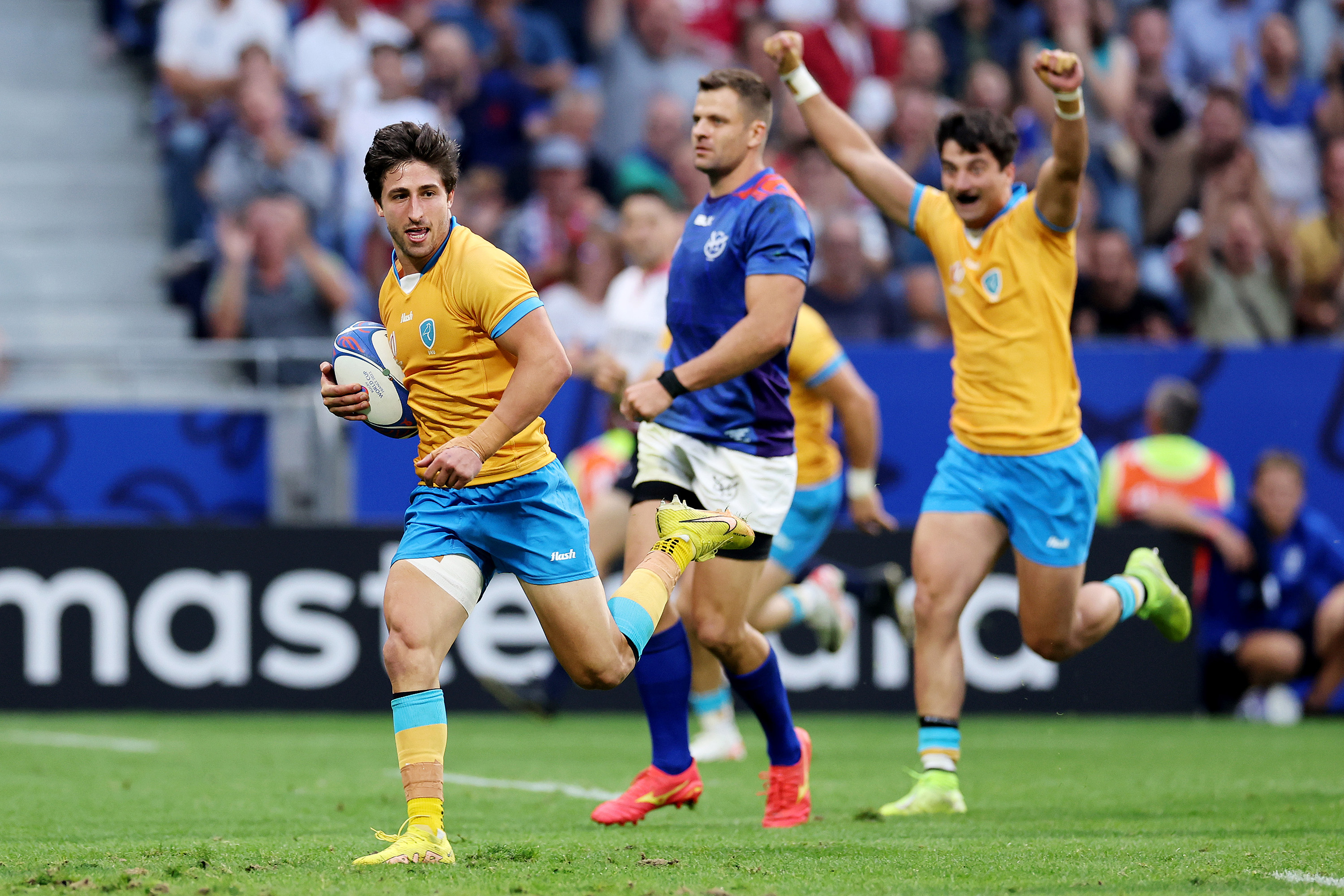
Santiago Arata of Uruguay breaks to score his team’s fourth try during the Rugby World Cup France 2023 match against Namibia at Parc Olympique in Lyon on 27 September 2023. (Photo: Jan Kruger/Getty Images)
A cash injection will help, but they aren’t going to be transformed into Ireland, South Africa, or even Fiji, overnight.
The idea of a two-tier World Cup is starting to gather momentum. The top teams would continue to progress in the Cup playoffs, and eliminated teams would compete for the Plate – as is the case in sevens.
This would ensure more teams remain at the competition for longer, and that interest in the respective nations is maintained for the duration of the tournament.
Tier-one nations eliminated early would also have the chance to stay on and compete for the Plate. Take Scotland, who look destined – barring a miracle result against Ireland in Paris – to end third in the “Pool of Death”. Instead of leaving the tournament after the pool phase, they would still have a shot at silverware in the Plate competition.
Schedule changes coming
From a South African perspective, the schedule between World Cups has changed significantly since local franchises joined northern hemisphere competitions in 2021.
Test regulars have been forced to compete for club and country for the better part of 12 months. The situation is not sustainable, and the Rugby Championship – which is played during the northern hemisphere off-season – may have to be staged earlier in the year to offset these challenges.
Alternatively, the Boks may join the Six Nations, once the broadcast deal with Sanzaar expires in 2025.
The next four-year cycle is due for changes that could reshape the sport. The biennial Nations Cup, due to kick off in 2026, will feature the Six Nations and Rugby Championship teams, as well as Fiji and Japan.
It’s hard to see when the tier-one nations would have the time to face their tier-two counterparts in an increasingly congested schedule. A tier-two tournament would be staged at the same time as the Nations Cup, but there would be no promotion or relegation between the two divisions for now.
As Georgia coach Levan Maisashvili told Rugby World: “World Cups offer a showcase to grow the game globally – which quite rightly is World Rugby’s primary mission. The new [Nations Cup] competition could do the same, but reports say there won’t be promotion and relegation until 2032.
“That would mean almost no chance of most of my current squad ever having the opportunity to take part however well they perform and whoever we beat.”
It’s been a treat to see so many tier-two nations performing at the 2023 World Cup, and if a plan is implemented to guarantee some progress in the coming years there will be concrete reason to be optimistic.
Failing that, the next World Cup will witness similarly one-sided scorelines and the gap between the haves and have-nots will continue to grow. DM
This story first appeared in our weekly Daily Maverick 168 newspaper, which is available countrywide for R29.
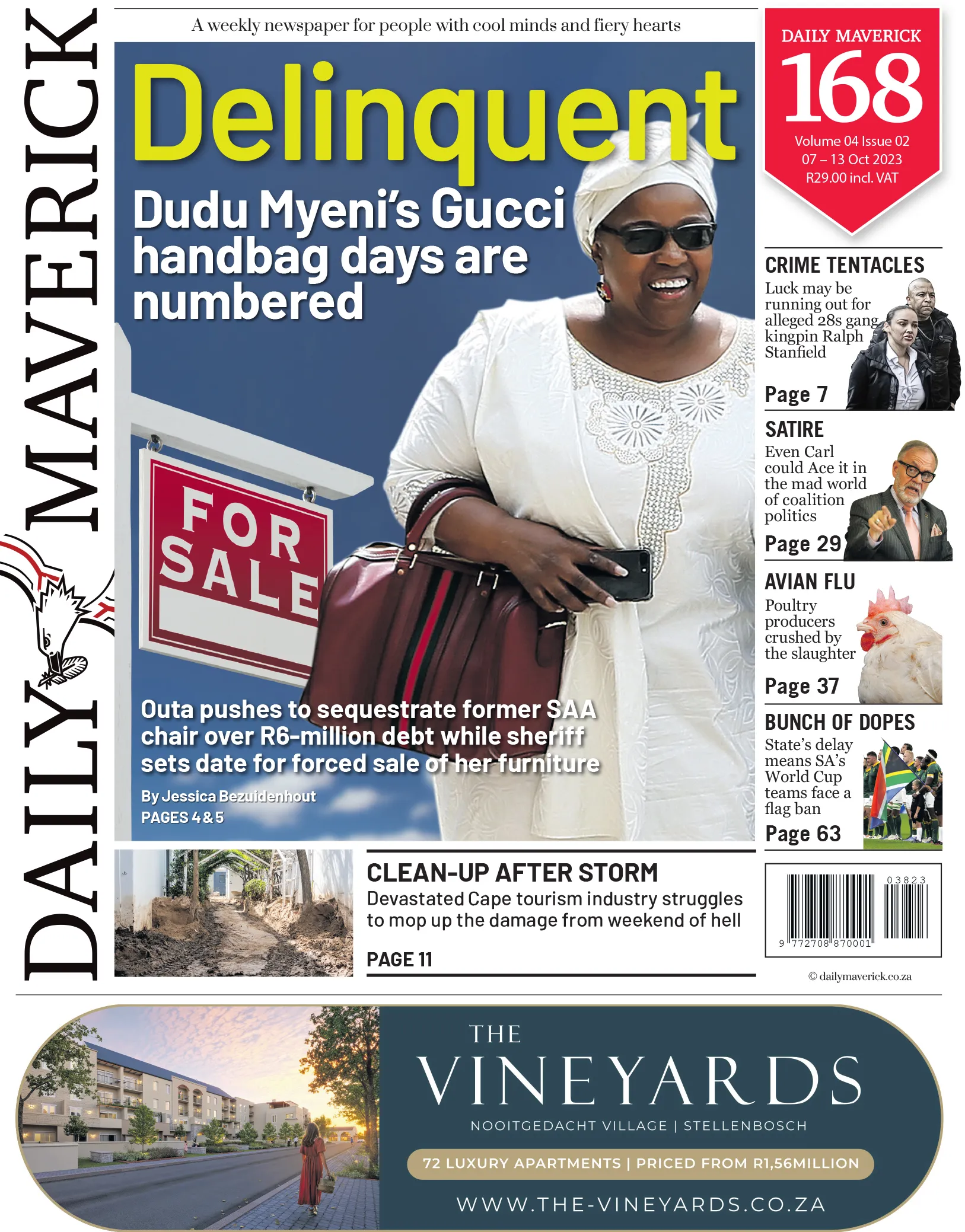


















 Become an Insider
Become an Insider
The Plate (and even Bowl) competitions a la Sevens is a no-brainer. Can’t understand why it wasn’t implemented a few renditions ago. Will maintain the excitement and give every team something to aim for.